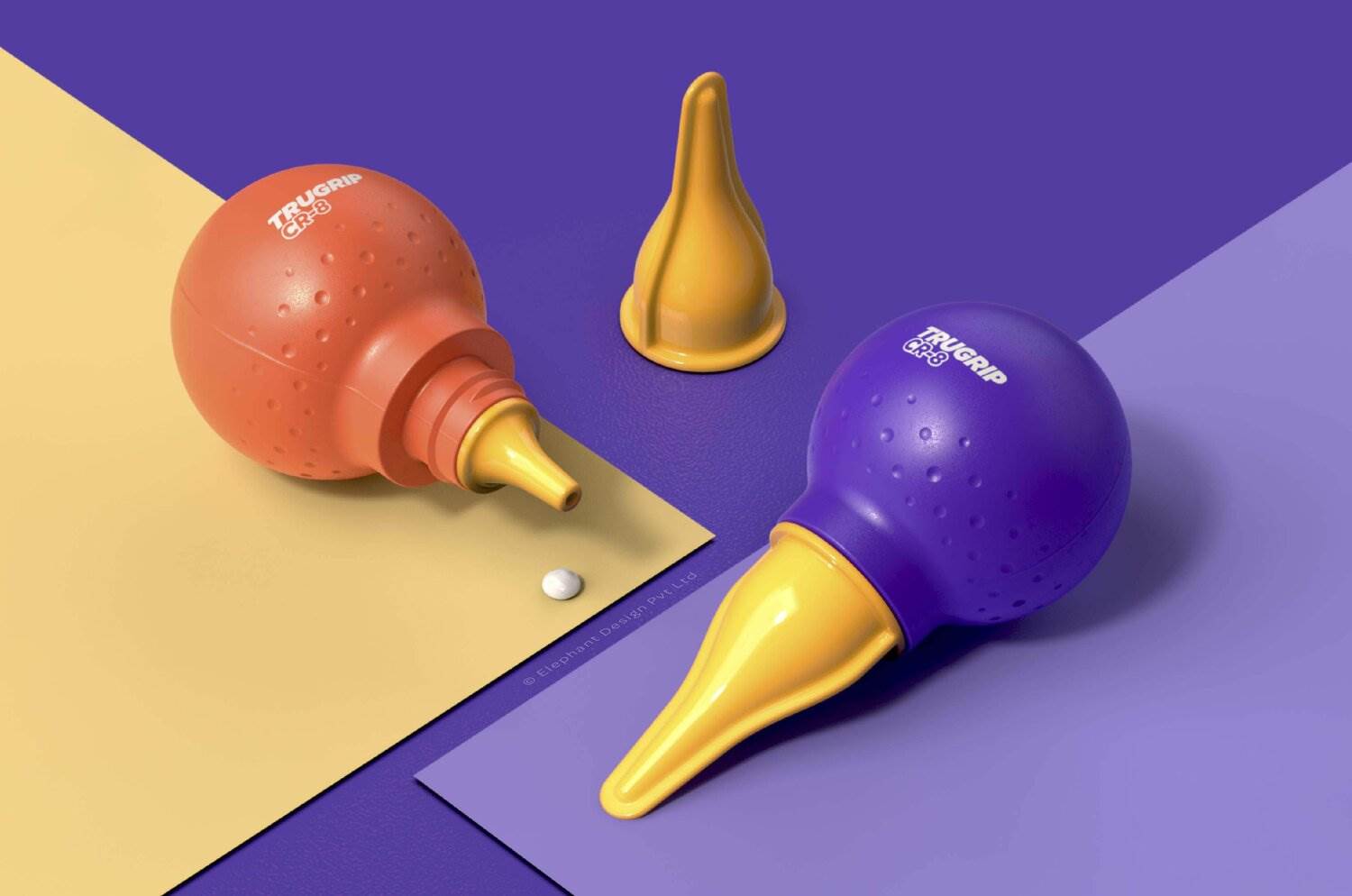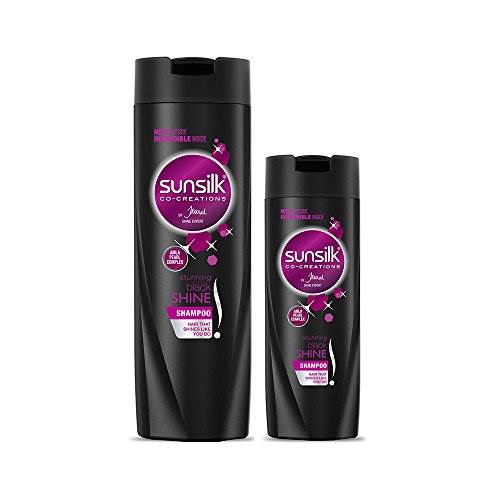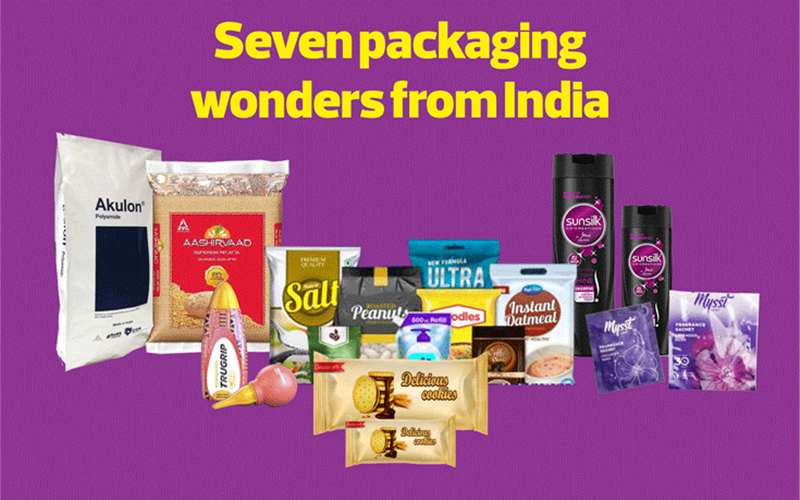Seven packaging wonders from India
A look (and celebration) of the seven innovations that swept the Awards at WorldStar 2021.
23 Jan 2021 | By WhatPackaging? Team
Asian Paints’ TruGrip CR-8 Orbs

Asian Paints launched its TruGrip glue product with a colourful and playful packaging to cater to the commercial segment, such as for schools and households. The company assigned Pune-based Elephant Design to create these innovative use-pack structures.
The team at Elephant decided a spherical colourful orb to be the ideal structure to hold the glue in this ‘glue-stick’ category. The shape in itself was quite unconventional, but also extremely easy to manipulate, hold and operate without any hitches. While the nozzle allowed the precise application of glue in a variety of formats: dots and lines, on uneven and smooth surfaces and varied angles.
According to the Pune-based design specialist, one of the more challenging elements of the orb was the fact that it could not stand up on its own, making it hard to sell as an individual unit. To remedy this for retailing purposes, cartons made of corrugated cardboard having a window patch were chosen. The orbs were aimed at captivating the minds of children while being functionally superior in terms of size, glue dispensing ability and grip, which gave it an added advantage.
Recycled HDPE Sunsilk bottle by Alpla India

Alpla India partnered with Hindustan Unilever (HUL) for the large-scale production of Sunsilk 180ml shampoo bottle packaged with Post-Consumer Recycled (PCR) plastic. As per the project, the package was produced with 25% rHDPE (PCR). According to the company, this enabled a potential volume of more than 100 MT of PCR to be consumed in 2020.
Cosmo Films’ high barrier CPP films

Cosmo Films’ high barrier, heat sealable CPP films offer high hot tack and low seal initiation temperature enabling packaging machines to run at higher speeds. According to the company, the current MET and CPP innovation has replaced the conventional three-layer packaging structures to two-layer structures.
Pankaj Poddar, CEO, Cosmo Films, said, “We see more and more CPP being used globally as well as India as a choice material for packaging applications in the food and agriculture, owing to its high transparency vis-à-vis polyethylene and excellent sealing performance.”
As far as the barrier is concerned, the films offer good moisture, oxygen, light and aroma barrier properties. The films are well suited for both adhesive as well as extrusion lamination.
Huhtamaki’s high barrier bulk bag

This innovative bag has been developed with a unique registered lamination process that helps in reducing sealant thickness while providing air cushioning to enhance its drop resistance. The drop performance is further improved by reinforcing the bag with special resins, a K-seal to withstand pressure at the pouch corners and a shift from centre seal to off-centre seal.
Furthermore, to overcome the sticking issues during stacking, a NRV or one-way valve is fixed at the lower end of the pouch to aid in dissipation of trapped heat during hot product filling. The bag’s surface is additionally treated to make picking easy and further improve stacking and palletisation processes.
Huhtamaki's Recyclable mono-paper air fragrance pocket

As mentioned by the WPO, this inner-outer pack eliminates waste at source with its fully-recyclable design and responsible material use, while a special, heat-sealable mono-paper inner pocket offers a natural look, controlled fragrance-permeation, seal-integrity and one-month shelf life without pack sogginess. It also eliminates additional lamination process to sealant PE, enabling energy and material savings.
Replacing a conventional PET/PE structure, the outer sachet comprises a polyolefin-based PP/PE for easy recyclability with same polymer-family materials. Meanwhile, the EVOH-based PE helps in balancing fragrance barrier with permeability while meeting prescribed limits for recyclability. The package successfully overcomes ink consumption and half-tone reproduction challenges associated with flexo-printing.
ITC’s breathable wheat flour pack with air release control for Aashirvaad Atta

According to ITC, the new packaging design has disrupted the traditional way wheat flour is packed in the country, where a PET/ polyethylene-based laminate is used with the incorporation of pinholes to eradicate the air entrapped inside the pack.
R Senguttuvan, the chief executive of the packaging and printing business of ITC, said, “The breathable wheat flour pack with air release control which besides strengthening the packaging, prevents the ingress of pests into the product. This superior packaging solution has introduced consistent micro-holes which prevents bursting and infestation, extends shelf life and allows the pack to withstand harsh logistics conditions. This packaging will greatly benefit the wheat supply chain and ultimately the consumer.”
The demerits of pinholes are that they are usually non-uniform in certain cases and seem to block the product. The pinholes don’t allow the entrapped air to escape the pack, thus, further weakening the pack, especially during transit and storage. As a solution for this, ITC's breathable wheat flour pack with air release control design comprises of micro holes in specific areas to remove the headspace air immediately during the packing and filling operations. These holes enable the entrapped air to escape from the pouch and prevent bursting of the pouch during transit and storage.
Max Speciality Films’ heat resistant oxygen barrier HROB Films for noodle over-wrap

Max HROB BOPP film has a high oxygen barrier in comparison to PET. It offers a good wetting tension for printing and lamination, good optical and stiffness properties which makes it an ideal choice to replace PET film as the top layer of a laminate to make over-wrap pack sustainable.
Usually, the noodles over-wrap pack (PET+PE) cannot be recycled because PET and PE are from different polymer families having different rheological properties. Thus, this new film comes as a sustainable solution that can be employed on a commercial scale to replace transparent PET from new noodle over-wrap.
Source: WPO












 See All
See All